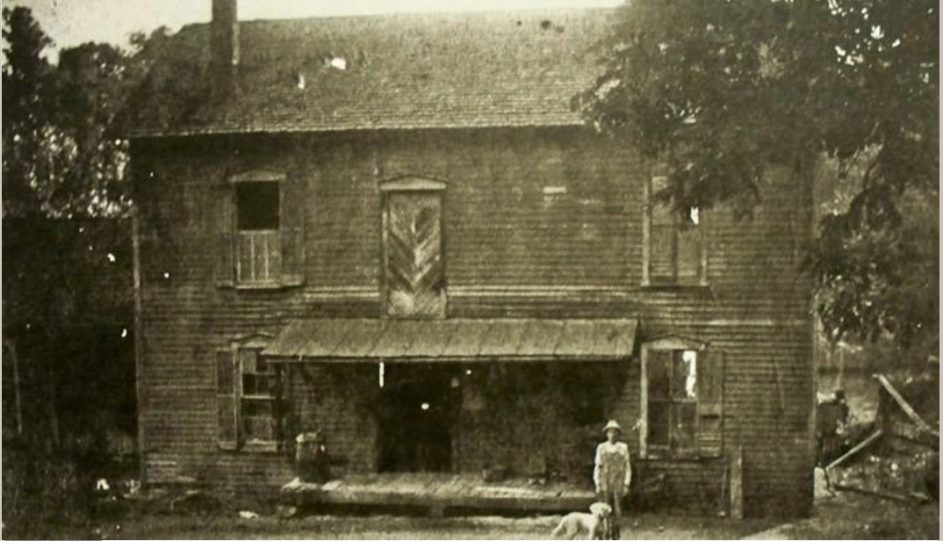When Gene McNutt “Mac” Abel (1921-2017) went gently into that good night on Sept. 18, 2017, he took with him a world of information regarding the history of the Concord-Farragut community. He was a joy to sit and listen to as he told of his experiences of living in Concord.
Mr. Abel was born and raised in the Park City area of East Knoxville which, at that time, was a relatively new section of the city that offered modern utilities, paved streets and sidewalks. The contrast to that lifestyle was obvious when he visited his grandparents, Sandy and Annie McNutt, who lived in Concord where such amenities did not exist. After spending much time with his grandparents, he developed a love for the people of Concord and, after his marriage, made it his home for approximately 70 years.

Gene McNutt “Mac” Abel was a long-time resident of the village of Concord and was responsible for having it designated as an Historic District in the National Register of Historic Places. He and his late wife, Frances, wrote the book “Concord, Where Time Stood Still.”
The abundant rainfall of spring and now the dry fall weather has reminded the author of the conversations with “Mr. Mac” regarding the early lifestyle of Concord-Farragut and the water supply for the community.
He related that “the founders of Campbell Station recognized the importance of fresh water and chose a site that included a free-flowing spring within the palisade walls of the fort which was located in the general area of the Campbell Station Road extension.” This spring also served the A.M. Russell home and adjacent dairy facility.
The Matt Russell home also had a spring and attractive spring house. Today that spring is located directly under home plate on the Farragut High School baseball diamond.
In the Concord village there were several springs available for public use. One was at the foot of Spring Street. Another was a spring that supplied the Pleasant Forest Church located on the grounds of the Pleasant Forest Cemetery. That spring served the Hackney House and Mill. According to Mr. Abel, the mill once had an elevated cable to which buckets were attached to carry water to the Seven Oaks Dairy operated by the Charlie Russell family.
As the community grew, not every family had the privilege of carrying water from the public springs and they began to dig a shallow shaft where a man could reach the water table. Later on, families began to drill wells of greater depth and use a well bucket that would fit inside the shaft to bring water to the surface.
Some homes used cisterns to collect water for household use. The cistern was a hole dug six to eight feet in diameter and 10 to 15 feet deep. It was lined with brick or stone and collected rainwater from the roof by gutters and downspouts.
Personal hygiene was usually reserved for Saturday nights when a pan full of water was heated on the wood burning stove and poured into a large galvanized tub.
Indoor plumbing was slow in coming to the Concord-Farragut community. Mr. Abel said that the first indoor plumbing was the residence of Dr. Carl Henry at the corner of Olive and Second Street. Dr. Henry had renovated the house for the arrival of his bride, Eva Bevins, in 1921. He had a long wooden tank installed in the loft of his carriage house which would hold water pumped from a nearby well. This same system also supplied water to Dr. Henry’s office, Concord Methodist Church, and later the R.C. Irwin family and businesses along Front Street (now Lake Ridge Drive).
And those who experienced the outdoor privy on a cold winter morning remember it well. Quite the polar opposites from the indoor conveniences we have today.
In 1954, First Utility District was founded and the Concord-Farragut area began to modernize, bringing the “good old days” to a thing of the past.
It is a pleasure to pass along a few of memories that Mr. Abel has left behind from those who were privileged to have known him. He was a kind and gentle man who is very much missed in the community.

Spring waters behind the old Hackney Mill. (Photo courtesy of Farragut Museum.)

